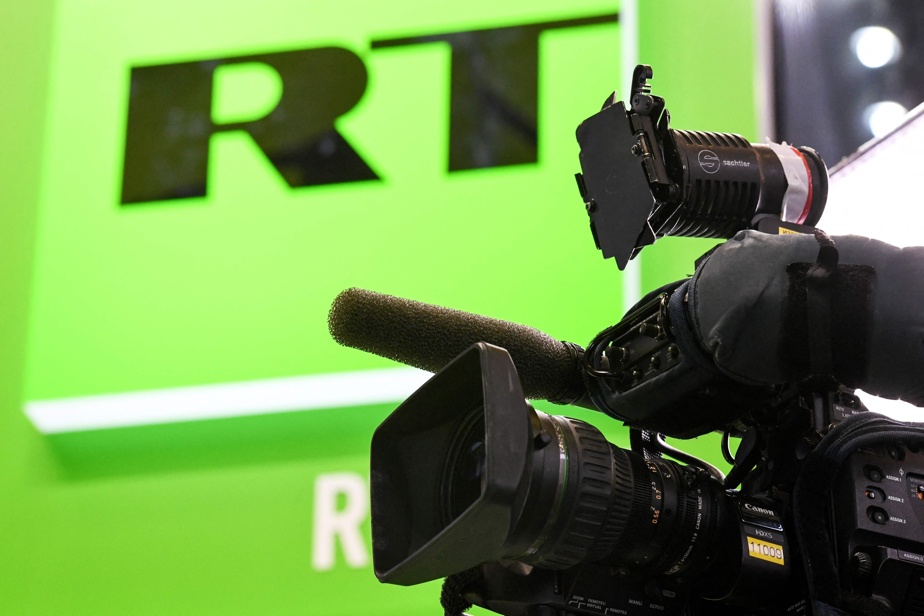(OTTAWA) Canada’s Foreign Affairs Minister, Mélanie Joly, and National Defense Minister, Anita Anand, announced Sunday afternoon that Canada would send a third shipment of military equipment to Ukraine. Canada is responding to the request expressed earlier this week by the Deputy Prime Minister of Ukraine.
Updated yesterday at 8:52 p.m.
“They need helmets, bulletproof vests, gas masks and night vision equipment,” Minister Joly said at a press conference. She said she received the request “directly” from Ukraine’s Deputy Prime Minister Olha Stefanishyna when she spoke with her. The equipment aims to “ensure the safety” of Ukrainian fighters.
The announcement by Ministers Joly and Anand came hours after European Commission President Ursula von der Leyen announced a series of measures to help Ukraine, including the purchase and arms delivery.
“I want to be very clear: we intend to do more,” said Minister Joly.
A passageway has been negotiated with Poland to bring Canadian equipment to its border with Ukraine. The two ministers did not want to advance on the probabilities that Russia intercepts the cargo.
“Only Putin knows what Putin will do,” replied Minister Anand. And we’re going to do everything we can to get that help as quickly and as safely as possible. We have successfully delivered our first and second shipments of lethal aid to Ukrainian territory and we have the logistical expertise and relationships with our allies to ensure our teams are safe during deliveries. »
Protect those who are armed
This equipment will be useful to citizens who are now armed, but not protected, according to the director of the Canadian Network on Defense and Security, Stephen Saideman, also professor of international relations at Carleton University.
According to the images we see, the Ukrainian government has given guns to many people, who will now need helmets and bulletproof vests. It makes sense, but the question is whether we have large stocks of gear and what kind of gear we can donate.
Stephen Saideman, Director of the Canadian Defense and Security Network
This third Canadian cargo will be transported to Europe by Hercules aircraft with the help of the Canadian Armed Forces (CAF). In mid-February, Canada sent $7.8 million worth of lethal weapons, ammunition and military equipment. Prime Minister Justin Trudeau’s announcement was made 10 days before the first Russian attack in Ukraine.
The government does not rule out sending other lethal weapons to Ukraine, such as anti-tank weapons, but does not intend to send soldiers. “A combat mission is not on the table right now, nor is it for our allies, including the United States,” reiterated Minister Anand. The increase in North Atlantic Treaty Organization (NATO) troops in Europe serves to “enhance deterrence”. Some 3,400 Canadian soldiers are on standby, ready to deploy to participate in the NATO Response Force.
Anita Anand also recalled that the CAF had helped train more than 33,000 Ukrainian soldiers.
The Russian invasion of Ukraine is in its fourth day. At the time of this writing, the country’s capital, Kiev, was still under Ukrainian control despite the bombings. The President of Russia, Vladimir Putin, claimed to have put the Russian nuclear force on alert. “Irresponsible rhetoric,” denounced Minister Anand. “Canada remains united with its allies in the face of its unprovoked aggression. »
The issue of misinformation
The retaliatory measures against Russia have escalated rapidly over the past few days. On Sunday morning, Canada followed several European countries and closed its airspace to all Russian aircraft operators.
On Friday afternoon, Prime Minister Justin Trudeau announced a third salvo of sanctions, this time against 57 people, including Vladimir Putin, his chief of staff and his Minister of Foreign Affairs, Sergei Lavrov, as well as against the Belarusian regime.
On Saturday, the Conservatives called on the government to take five other immediate measures: the expulsion of the Russian ambassador to Ottawa, the recall of the Canadian ambassador to Moscow, the withdrawal of the Russia Today (RT) channel from Canadian airwaves, Russia’s withdrawal from the G20 and the Organization for Security and Cooperation in Europe, and the lifting of visas for Ukrainians wishing to come to Canada.

PHOTO KIRILL KUDRYAVTSEV, AGENCE FRANCE-PRESSE ARCHIVES
Bell and Rogers have removed Russia Today from their channels.
“We all know that RT is a problem and we will fix it,” hammered Mélanie Joly. She noted that the Russian government-funded news channel was not the only one spreading disinformation, that the Sputnik news agency and social media campaigns were also doing so.
We want to make sure that these companies are doing more to prevent any form of misinformation by these websites and other entities.
Mélanie Joly, Minister of Foreign Affairs of Canada
Hours later, Canadian Heritage Minister Pablo Rodriguez announced on Twitter that Bell and Rogers had removed RT from their channels. “I salute Bell for removing RT,” he wrote. Since 2014, Russia has been waging a war in Ukraine and an information war across the world. RT is the Putin regime’s propaganda outlet that spreads disinformation. It doesn’t belong here. I will say more very soon. »
“Rogers will also be removing RT and replacing it with a Ukrainian flag broadcast,” he posted about an hour later.
As for the Canadian ambassador to Russia, Minister Joly believes that he must remain in post there to continue to take the pulse of the Russian population while thousands of people demonstrate against the war and risk being arrested by the regime.

